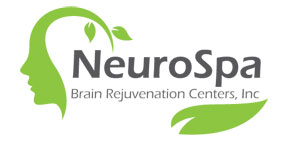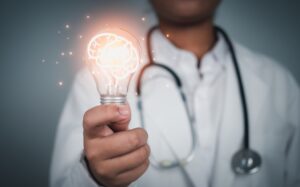Can Brain Stimulation Make You Smarter? What rTMS Research in Healthy Adults Shows
In the world of neuroscience, one question continues to spark curiosity: Can we safely and effectively enhance cognition in healthy people? Recent research into repetitive transcranial magnetic stimulation (rTMS) suggests that the answer might be yes—especially when targeting a key brain region: the dorsolateral prefrontal cortex (DLPFC).
What Is rTMS?
rTMS is a non-invasive brain stimulation technique that uses magnetic pulses to modulate brain activity. It’s FDA-cleared for conditions like depression, but scientists have been exploring its potential for boosting memory, attention, and executive function in healthy individuals.
What the Science Says
A recent systematic review and meta-analysis evaluated how rTMS over the DLPFC affects cognition in healthy adults. The results are promising:
- Improved working memory, verbal memory, and processing speed
- Enhanced decision-making, attention, and cognitive control
- Strongest effects seen with stimulation over the left DLPFC (especially Brodmann areas 9 and 46)
Which Protocols Work Best?
- High-frequency rTMS (5 Hz or more) showed the most consistent improvements
- Intermittent Theta Burst Stimulation (iTBS) also led to modest but meaningful cognitive gains
- rTMS combined with cognitive training yielded greater benefits than stimulation alone
How It Might Work
rTMS is thought to improve cognition by:
- Increasing cortical plasticity and connectivity between brain regions
- Enhancing frontoparietal network (FPN) and default mode network (DMN) function
- Influencing cholinergic systems that are vital for attention and memory
Limitations & Considerations
While results are encouraging, the studies varied in quality and methodology. Some limitations include:
- Small sample sizes
- Variability in rTMS settings and cognitive tasks
- Mixed findings for long-term memory outcomes
Side Effects?
Most participants tolerated rTMS well. Reported side effects were mild and temporary:
- Scalp irritation
- Headache
- Fatigue
Serious side effects like seizures are rare, especially when protocols follow safety guidelines.
The Takeaway
rTMS offers a promising path to non-invasive cognitive enhancement. While we aren’t quite at “neurohacking” levels yet, stimulating the DLPFC may help sharpen memory and mental performance in healthy individuals—particularly when paired with mental training.
More large-scale, well-controlled studies are needed. But for now, the science points to real (and safe) potential.
Stay curious. Stay sharp. The future of brain health is just getting started.


